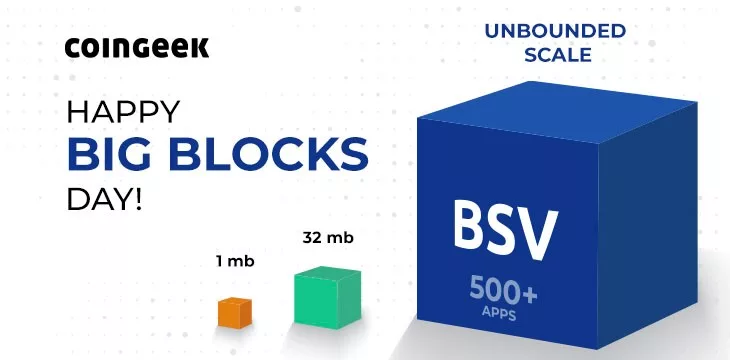|
Getting your Trinity Audio player ready...
|
Six years have now passed since Bitcoin underwent one of its most contentious splits—the emergence of the Bitcoin Cash ticker (BCH). The division, influenced by debates around scalability solutions and transaction fees, gave rise to two camps: those advocating for the Bitcoin Core (BTC) dev-controlled chain and those supporting the original design of Bitcoin in the form of BCH.
Key Players:
The split involved several high-profile figures in the Bitcoin world. Jihan Wu and Roger Ver, co-founders of Bitmain and Bitcoin.com, respectively, were among the leading supporters of BCH, arguing for larger block sizes as a solution to Bitcoin’s scalability issues. There was also support from Peter Rizun of Bitcoin Unlimited, Amaury Sechet of Facebook (NASDAQ: META) and his Bitcoin ABC implementation, and folks like Ryan X. Charles, who were happy to join the big blocker message.
They were met with resistance from the core BTC developers and proponents like Greg Maxwell, who is in many ways the face of Blockstream and BTC Core in general. The small blockers advocated for off-chain solutions such as the Lightning Network as a downstream product of SegWit and other technobabble changes to BTC.
Notably, Craig Wright did not support the BCH split—instead advocating to fight for the main consensus and speaking more broadly about Bitcoin as a system roughly a month earlier at the Arnhem Bitcoin Conference in 2017.
For what it’s worth, I was in this same camp and only decided to support BCH after it was clear that my allies would no longer rally to fight for BTC.
Issues:
The crux of the split lay in BTC’s scalability problem due to core implementation limits. As Bitcoin’s popularity grew, so too did the time it took to process transactions into arbitrarily limited blocks, leading to higher transaction fees. The big blockers argued for an increase in the block size limit from 1MB to 8MB, enabling more transactions per block and, thus, faster processing times. On the other hand, BTC supporters feared that larger blocks would lead to increased centralization and instead favored off-chain solutions.
This debate was crystalized in two conferences that happened in Hong Kong and New York, where roadmaps were defined and agreed upon by developers, business interests, miners, and various community members. Still, the small blockers stabbed everyone in the back at the last minute and canceled their support for the Segwit2X change—leading to a contentious split.
Results:
The consequences of the split have been manifold. BCH initially saw a surge in value, reaching its peak in December 2017 and on some markets coming near parity with BTC, but its market value has since significantly decreased with big punctuation marks in late 2018 when the BSV split happened, and BCH landed itself on the small blocker side of a debate echoing 2017’s, and then further subterfuge by Amaury Sechet led to yet another split of BCH. This path arguably obliterated BCH’s chances of an ultimate victory, but its contributions were myriad during that era.
In November, we will cover the anniversary of the BSV era for Bitcoin, but for now, let’s talk about the fifteen and a half months where BCH was “the real bitcoin.”
The Memories
For a brief period, as BTC activated Segwit, added a whole new Merkle tree to track witness data, and moved signatures to a new system that they insisted was still Bitcoin because of the popularity and price of the ticker, and the big blockers had come together to maintain the unbroken chain of digital signatures on a mission to restore bitcoin.
In that era, Mempool Mining broke a world record mining an 8MB block, and the teams from nChain, Bitcoin Unlimited, Bitcoin Classic, and Bitcoin ABC had come together to restore Bitcoin’s OP_Codes, scale up the block size limit and reimplement Satoshi’s Vision.
In mid-2018, Satoshi’s Vision Conference highlighted the strengths of the diverse economy that was being created and the broad base of big blocker support!
But all was not well as cracks were forming under the surface between Bitcoin ABC and nChain.
In retrospect
Ultimately, the split that started in 2017 has led to the restoration of the Bitcoin protocol in BSV blockchain, with record-setting 4GB blocks holding 2-3 million transactions per block with fees below a penny per transaction. There have been days on the network where thousands of transactions happen per second, and over 85 million transactions happen per day.
It’s easy to get lost in the people, the drama, the politics, and the price, but the real story is that Bitcoin’s antifragility is apparent if we zoom out and see that guys like Mike Hearn and Gavin Andresen were right. Bitcoin CAN process millions of payments on chain, it can maintain its 10-minute block time, and immense amounts of volume can be processed without causing chaos on chain, and it was always doable with Bitcoin’s original design, and all we had to do to see it was to try Satoshi’s Vision.
So today, we remember the BCH era, the wars, and the struggles, and we celebrate the fact that amid it all, WE ARE STILL HERE! And we are celebrating this anniversary of Bitcoin’s liberation from the control of the BTC Core cabal.
CoinGeek Roundtable: Hash War History

 12-23-2025
12-23-2025 




